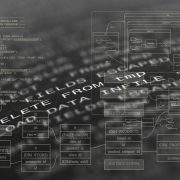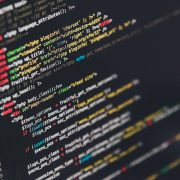As computing and electronic hardware become more sophisticated, the complexities and costs of software development will continue to become harder to control. The on-going rapid evolution of hardware capacities and capabilities presents a double edged sword for software applications. Hardware advancements boost performance and functionality, but also multiply complexities. This leads to expanded software requirements that in turn can add expense and fragility to the system development.
Doubling processor throughput or memory capacity may lead to only a slight increase in the cost of the hardware, but altering the software so that you can take advantage of the increased capacity can elevate the costs tremendously. Additionally, if the technology that was used to create the software doesn’t scale well, the software applications will be error prone and difficult to maintain.
Through software modernization, the software systems can benefit from the migration of legacy approaches to more current and modern approaches. If it is conducted successfully, software modernization makes sure that software engineering is able to keep pace with the ongoing development of hardware capabilities.
Approaches Towards Software Modernization
Software modernization can imply different things in different circumstances. In some situations, it’s desirable to retain a well-designed and successful legacy application, while improving its functionality by integrating new components. In other cases, it is best to transform the existing system that was written in an older language, running on an older hardware, to a more COTS (commercial off-the-shelf) friendly platform and language.
Overall, there are 4 different approaches towards software modernization, and depending on the enterprise requirements, one or a combination of the following 4 can be selected:
1. Upgrade — The technologies and languages used in the old-legacy systems can be upgraded to the greatest and latest versions.
2. Replacement — The core-complex rigid software or technology used in the legacy applications is first identified and then replaced with a better version of the same or equivalent technology. The replacement can be as uncomplicated as replacing the legacy database or backend system with modern technologies, such as SQL (Structured Query Language) or Oracle at the top line, or replacing the static-user screen in the bottom line to a user-friendly interface.
3. Redesign — The core framework of the system is retained, with the front-end and middleware being redesigned and developed using the greatest and latest version of a recent technology, as a result giving the application a new feel and look and improving its performance.
4. Migration — The whole legacy application (including its core framework) is migrated to a SOA (service-oriented architecture) or Web 2.0 enabled application. This approach involves identifying the software/technology that is suitable for the business process, architecting and designing, developing, testing and implementation. A good migration plan should weigh the technical and programmatic drivers for system development against the priorities of the customers.
In order to prevent repeating mistakes from the past, it’s desirable to upgrade not just the specific application, but the whole thinking behind the development of software. By doing this, the development process of new components of the legacy applications or new applications will become more productive, error incidences will be reduced, and the reuse and scalability of the software will be heightened.









